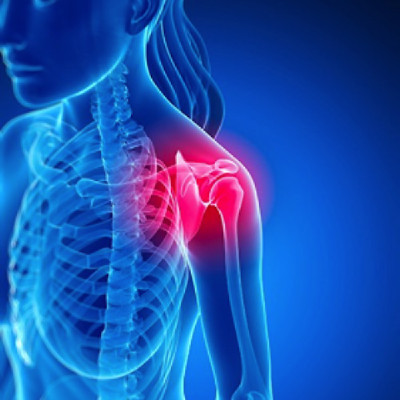Shoulder Pain
Causes and Treatment
The shoulder joint is the most moveable joint in the body and because of its large range of movement it is often prone to instability, pain and impingements. Instability and poor movement patterns in a joint greatly increase the risk of injury and long-term degenerative changes. Movements in the shoulder joint are performed in the glenohumeral joint and the acromioclavicular joint, two systems which are controlled by over a dozen muscles of varying strengths and sizes. Shoulder problems are one of the most common complains among patients.
Pain and restriction can be caused by a range of injuries e.g. tendonitis, bursitis, arthritis, rotary cuff tears, impingement, fractures, dislocation and adhesive capsulitis (frozen shoulder).
Causes of shoulder pain
- Instability in the joint, which could cause most of the problems mentioned above
- Trauma like falling onto shoulder with could create fractures, tears or dislocations
- Repetitive movements and/or lifting. - Jobs which require a lot of overhead lifting or gym-goes may find they experience shoulder problems from the repetitive nature of their job, especially if the shoulder is already in a poor position.
- Ageing process - The degradation of muscles caused by the ageing process can cause instability and reduced range-of-motion in the shoulder joint. In more extreme cases, the degradation of muscles can be so severe the shoulder momentarily pops out of the joint as muscles are too weak to hold it in place.
- Weakness in muscles in rotary cuff - The rotator cuff is a group of shoulder girdle muscles which provide internal rotation, external rotation and abduction of the shoulder joint. Four muscles (supraspinatus, infraspinatus, teres minor and subscapularis) are crucial to the healthy movement of the shoulder, yet they’re a relatively unknown group of muscles among the general population. Controlled muscular training of the rotator cuff muscles can often be of great benefit in the battle against pain caused by instability.
- Doing wrong exercises in gym - Doing exercises with poor form - or the wrong selection of exercises - will compromise the integrity of the shoulder joint. Repetitively putting your shoulders through unnatural ranges of motion with heavy loads is a sure-fire way to cause muscle strains and impingements which will affect the mechanics of the shoulder in the future.
- Poor posture - Poor postural habits can place stress on the muscles which support the neck. Conditions such as forward head syndrome lead to tight neck extensors and scalene muscles which can compress nerves and cause pain which stretches along the shoulders and down the arm.
- Nerve damage e.g. “slipped” disc in neck or nerve pressure under the collar bone.
Treatment
Being such a complicated joint, the shoulder is one of the hardest areas of the body to assess. Following a thorough assessment I will put together a treatment plan based on your diagnosis. Treatment often includes stretching and strengthening exercises to allow the body to re-balance itself and fix issues which stem from chronically shortened muscles, as well as massage techniques which aim to restore movement to the joint and relieve tight muscles. Electrotherapy can be used to promote blood flow to muscles of the shoulder which are under-active and kinesio taping is an effective tool in re-activating muscles which have become dormant after long periods of poor shoulder movement. In day to day life you should try and avoid activities which cause sharp, shooting or intense pains in the shoulder or upper torso, which can intensify problems, especially if they are of an impingement nature. For certain injuries, anti-inflammatory cremes or medication can be used, but only with the advice of your GP. Also be sure to use heat or ice packs with caution and ensure these aren’t actually making the pain worse. In more extreme cases I will suggest a cortisone injection is used on the shoulder, especially if the pain is too intense for me to do physiotherapy on the shoulder.
